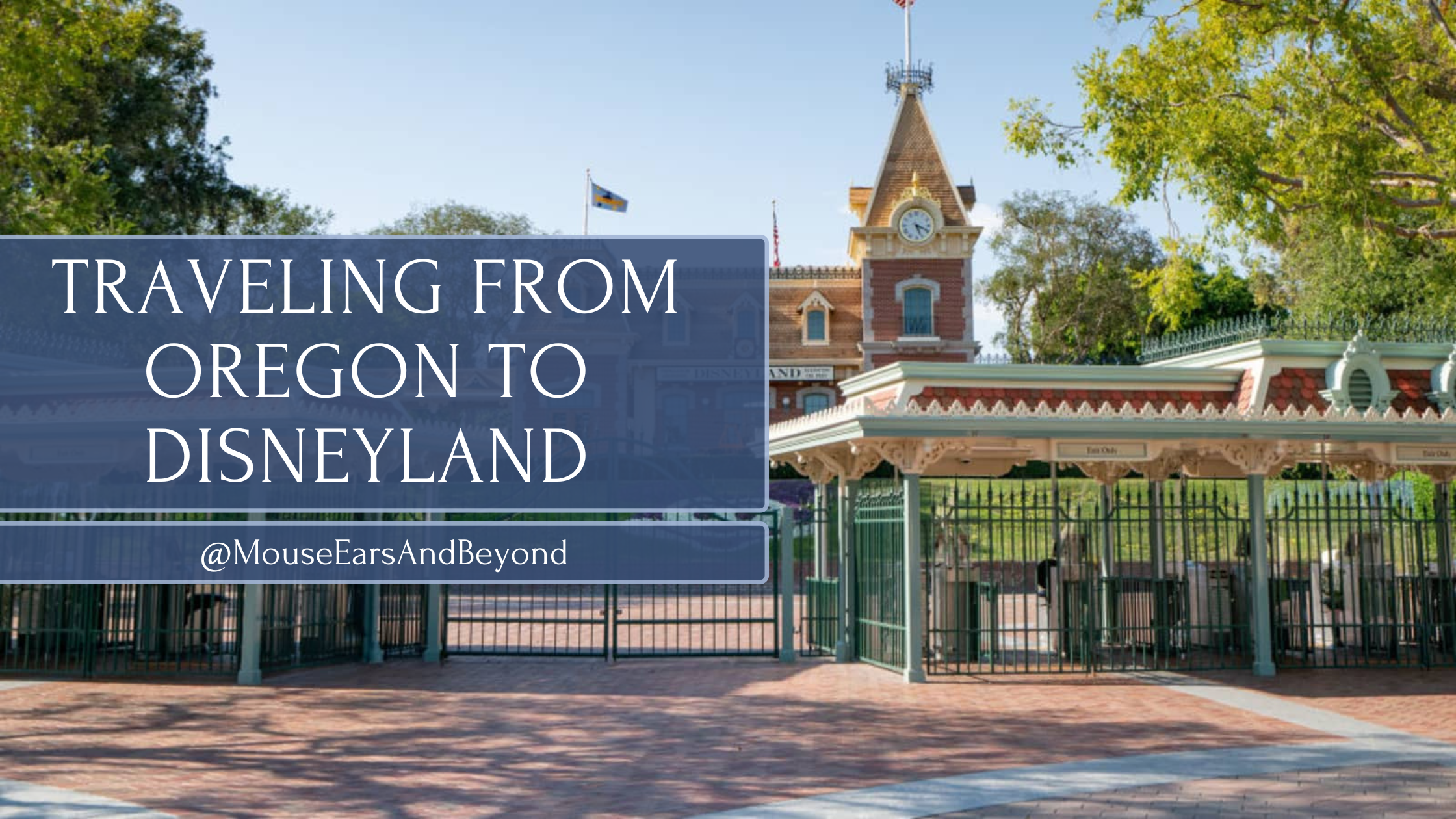We recognize that Disney vacations are not just an investment, but often the highlights of our lives, and we take that responsibility seriously. We want to ensure you have the best vacation experience.
Interested in a job in travel? Click here to learn: How to Become a Disney Travel Agent
Overview
Introduction
It's home to loggers and environmentalists, ultraconservative voters and hippies, deserts and rain forests, beaches and volcanoes. There's a big city full of high technology and progressive ideas. There are throwback ranch towns that seem closer to the 19th century than the 21st.
Oregon's variety is especially good news for vacationers. Where else can you go skiing in the morning (even in the summer) and whale-watching or deep-sea fishing in the afternoon? Where else can you recover from a llama trek by doing a little windsurfing?
Oregon's countless opportunities for outdoor recreation top the list of reasons to visit, but you don't have to leave with sore muscles. Its cities and towns are rich with history, art, culture and shopping. Sightseeing is as near as the closest highway. And more than anything else, it's the feel of the place that makes Oregon special: It's a combination of West Coast laid-back and small-town polite. All that, and it's just plain beautiful.
Geography
Oregon is one of the most geographically diverse spots in the U.S. The state's western border is formed by the Pacific Ocean, and the seacoast is separated from the rest of the state by the rugged mountains of the coastal range. East of the coastal mountains is the fertile Willamette Valley, stretching from southern Oregon to the Columbia River and bordered on the east by the Cascade Mountains. North and east of the Cascades is the Columbia Plateau, a dramatic, high-desert environment punctuated with mountains and secluded lakes. South and east of the Cascades is the northern end of the Great Basin desert.
History
More than 80 distinct tribes were living in present-day Oregon before the first Europeans arrived. Those of the central and southern Oregon coast—including the Tillamook, Coos and Tolowa—generally shared traits with other groups along the northern Pacific Coast. They relied on a fishing economy but were far less elaborate in their architectural styles, art forms, woodworking and rituals than were the tribes farther north (in present-day Washington and British Columbia). East of the Cascades, where it is considerably drier, the Native Americans led a more nomadic lifestyle, following game as it moved between summer and winter ranges.
In the late 1700s, Spain, England, Russia and the newly independent U.S. all had an interest in the frontier that would become the state of Oregon. The Lewis and Clark expedition sailed down the Columbia River (Oregon's northern border) in 1805, strengthening the claim of the U.S. Though the trappers of Britain's Hudson's Bay Company remained a force in the area into the mid-1800s, it was the deluge of settlers from Missouri and points east that eventually established the area as a territory of the U.S. The first of these pioneers arrived in 1834. From then until the end of the 19th century, half a million more followed the Oregon Trail into the region.
The influx of white settlers led to conflict with the Native Americans who saw their lands being consumed. One of the most tragic struggles involved the Nez Perce tribe of eastern Oregon. After existing peaceably with settlers and establishing treaties that granted them the right to remain in the valley that was their ancestral home, the Nez Perce were ordered out of Oregon in 1875. In response, they clashed with white settlers and soldiers and eventually embarked on an epic, 1,700-mi/2,750-km running battle that ended when Chief Joseph was forced to surrender in northern Montana.
By 1859 Oregon gained statehood, but its true ties with the rest of the U.S. came with the completion of the Northern Pacific Railroad in 1883. Felling the forests for lumber became big business, and big business it remains: Today, Oregon produces more timber than any other state. Its rivers are also a valuable resource: Hydroelectric dams provide energy for cities and industry over a wide area. The Willamette Valley is also home to the state's high-tech sector, and the sports and recreation industries flourish as well. Not surprisingly, Oregon has been at the forefront of the environmental and livability movements, so even though it is firmly entrenched in the modern era, the pioneering spirit is still alive and well.
Snapshot
Oregon's main attractions include rugged coastal scenery, outdoor activities, forests, river and deep-sea fishing, Portland, clamming, crabbing, white-water rafting, windsurfing, bicycling, nautical exhibits, Crater Lake National Park, historic sites, Mount Hood, the Columbia River Gorge, canoeing, skiing (both downhill and cross-country), hiking and backpacking in the wilderness, covered bridges, wildlife, rockhounding and camping.
Oregon is a perfect destination for those travelers who love the outdoors, beautiful craggy scenery, solitude, rural towns and an untouristy atmosphere. Those who are looking for a fast-lane pace—or who feel their vacation will be ruined if it rains—may find the state less to their liking.
Potpourri
Oregon is one of the few states in the U.S. to set limits on urban sprawl. Urban Growth Boundaries divide land into areas that can be developed and areas that must remain rural. Residents laud the concept for keeping the cities livable and aesthetically pleasing. In 2004, however, voters passed Measure 37, a controversial law allowing property owners to pursue government compensation or develop their land.
The only World War II casualties suffered within the continental U.S. occurred in Oregon. In May 1945, six people were killed when a Japanese balloon-bomb exploded where they picnicked on Gearhart Mountain, near the town of Bly. Riding the jet stream, the paper balloon was one of thousands sent aloft by the Japanese (only 369 of the balloons were ever found). The balloons' unfulfilled objective was to set fire to the western forests.
Oregon is the first state to institute vote-by-mail elections.
Oregon is the leading exporter of Christmas trees.
Oregon is a rock hound's Eldorado—while there, be sure to get a thunder egg (the state rock) for a souvenir.
Ninety percent of the nation's Easter-lily bulbs are grown on Oregon's south-coast farms.
The Oregon Coast stretches 362 mi/583 km. The Beach Bill, passed in 1967, guarantees public access to all Oregon beaches.
The hazelnut, also known as the filbert, is Oregon's state nut. The state grows 99% of the nation's commercial crop.
Overview
Introduction
Oregon City was the first incorporated city west of the Rockies, as well as the original capital of the Oregon Territory. For 300,000 early pioneers, it was the end of the Oregon Trail. You can relive that long and trying journey through audiovisual displays and artifacts at the End of the Oregon Trail Interpretive Center. Visit, too, the turn-of-the-century Stevens-Crawford House and the John McLoughlin Home (it's on the National Register of Historic Places—McLoughlin was a special agent for the Hudson's Bay Company). The view of Willamette Falls from the observation deck of the Oregon City Municipal Elevator is spectacular.
South of Oregon City on Highway 214, the little town of Mount Angel has a strong German-Swiss heritage. (If you're there in September, you won't be able to miss the Mount Angel Oktoberfest—a big deal in the area.) Drive up to have a look at Mount Angel Abbey, a monastery established by Swiss Benedictine monks that is high on a 330-ft/100-m butte. Oregon City is 12 mi/20 km south of Portland.
































